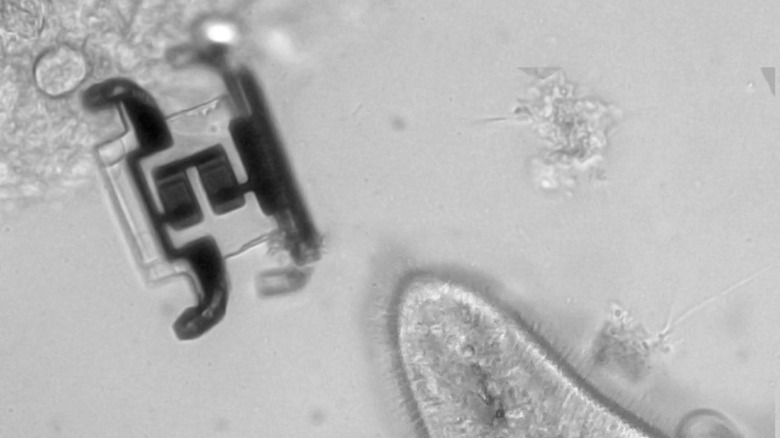These Injectable Nanobots Can Walk Around Inside A Human Body
Researchers have developed nanobots that can be injected using an ordinary hypodermic syringe, according to a new release. The nanobots are microscopic functioning robots with the ability to walk and withstand harsh environments. Each robot has a 70-micron length, which is about the width of a thin human hair, and a million can be produced from a single 4-inch silicon composite wafer.
The new nanofabrication techniques were developed by Marc Miskin and colleagues at Cornell University. The research will be presented at the American Physical Society March Meeting next week. According to a release from EurekAlert, the team spent years developing a nanofabrication process that can produce a million nanobots from a specialized 4-inch silicon wafer in the span of weeks.
These micro-robots feature four legs composed from graphene or platinum and titanium; they're described by Miskin as "super strong," enabling the nanobots to carry a body weighing about 8,000 times more than each leg. As well, each leg measures only 100 atoms thick, and they can carry bodies 1,000 times thicker, according to the researchers.
The proof-of-concept achievement happened in late 2017, but the experts continue to work on their creation. Teams at both Cornell University and the University of Pennsylvania, where Miskin recently became an assistant professor, are developing 'smart' versions of these nanobots. The upgraded versions will feature controllers, sensors, and clocks.
At this point in the development process, the nanobots are solar-powered, but that energy source limits how deep the robots could be injected into tissue. In the future, microscopic robots like the ones developed by Miskin and his colleagues may be used to deliver drugs directly to injuries or tumors, but the solar energy requirement would be a major limitation.
In its place, future nanobots may be powered using magnetic fields or ultrasound, making it possible for them to travel deeply into the human body. While talking about the technology, Miskin said, "When I was a kid, I remember looking in a microscope, and seeing all this crazy stuff going on. Now we're building stuff that's active at that size. We don't just have to watch this world. You can actually play in it."
